Soyoung Yoo
DeepWheel: Generating a 3D Synthetic Wheel Dataset for Design and Performance Evaluation
Apr 16, 2025Abstract:Data-driven design is emerging as a powerful strategy to accelerate engineering innovation. However, its application to vehicle wheel design remains limited due to the lack of large-scale, high-quality datasets that include 3D geometry and physical performance metrics. To address this gap, this study proposes a synthetic design-performance dataset generation framework using generative AI. The proposed framework first generates 2D rendered images using Stable Diffusion, and then reconstructs the 3D geometry through 2.5D depth estimation. Structural simulations are subsequently performed to extract engineering performance data. To further expand the design and performance space, topology optimization is applied, enabling the generation of a more diverse set of wheel designs. The final dataset, named DeepWheel, consists of over 6,000 photo-realistic images and 900 structurally analyzed 3D models. This multi-modal dataset serves as a valuable resource for surrogate model training, data-driven inverse design, and design space exploration. The proposed methodology is also applicable to other complex design domains. The dataset is released under the Creative Commons Attribution-NonCommercial 4.0 International(CC BY-NC 4.0) and is available on the https://www.smartdesignlab.org/datasets
Wheel Impact Test by Deep Learning: Prediction of Location and Magnitude of Maximum Stress
Oct 03, 2022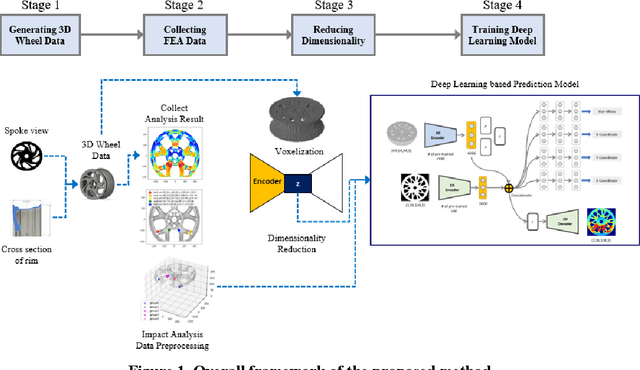

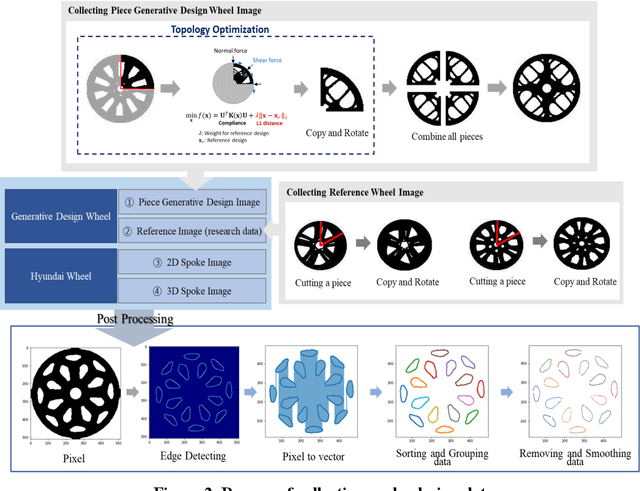

Abstract:The impact performance of the wheel during wheel development must be ensured through a wheel impact test for vehicle safety. However, manufacturing and testing a real wheel take a significant amount of time and money because developing an optimal wheel design requires numerous iterative processes of modifying the wheel design and verifying the safety performance. Accordingly, the actual wheel impact test has been replaced by computer simulations, such as Finite Element Analysis (FEA), but it still requires high computational costs for modeling and analysis. Moreover, FEA experts are needed. This study presents an aluminum road wheel impact performance prediction model based on deep learning that replaces the computationally expensive and time-consuming 3D FEA. For this purpose, 2D disk-view wheel image data, 3D wheel voxel data, and barrier mass value used for wheel impact test are utilized as the inputs to predict the magnitude of maximum von Mises stress, corresponding location, and the stress distribution of 2D disk-view. The wheel impact performance prediction model can replace the impact test in the early wheel development stage by predicting the impact performance in real time and can be used without domain knowledge. The time required for the wheel development process can be shortened through this mechanism.
Explainable Artificial Intelligence for Manufacturing Cost Estimation and Machining Feature Visualization
Oct 28, 2020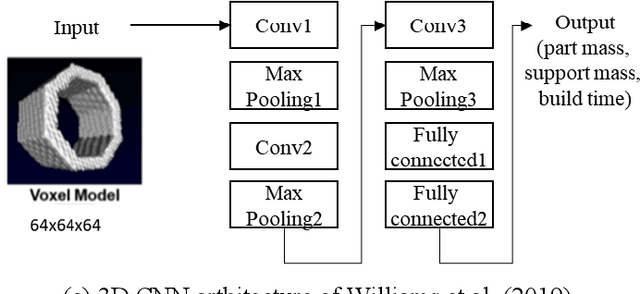
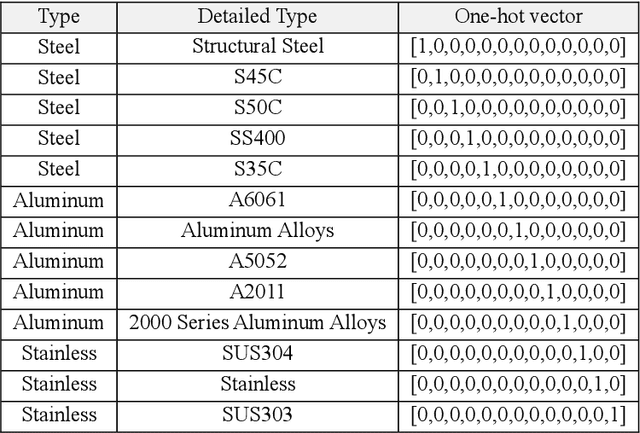
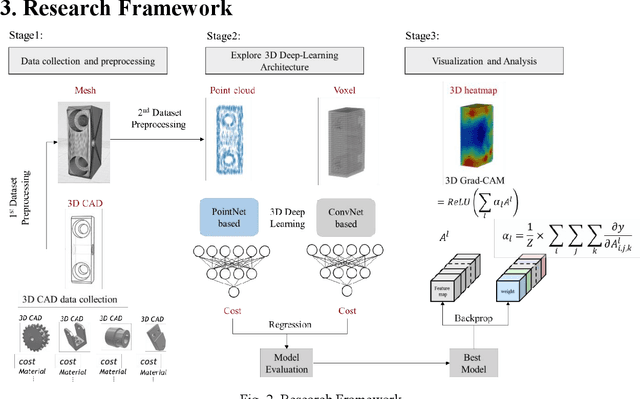
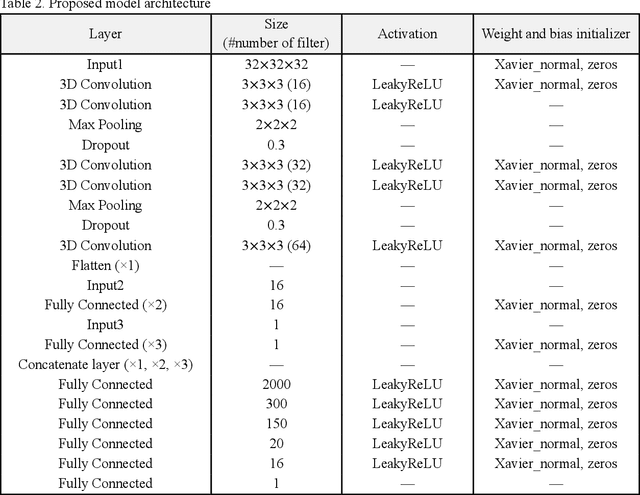
Abstract:Studies on manufacturing cost prediction based on deep learning have begun in recent years, but the cost prediction rationale cannot be explained because the models are still used as a black box. This study aims to propose a manufacturing cost prediction process for 3D computer-aided design (CAD) models using explainable artificial intelligence. The proposed process can visualize the machining features of the 3D CAD model that are influencing the increase in manufacturing costs. The proposed process consists of (1) data collection and pre-processing, (2) 3D deep learning architecture exploration, and (3) visualization to explain the prediction results. The proposed deep learning model shows high predictability of manufacturing cost for the computer numerical control (CNC) machined parts. In particular, using 3D gradient-weighted class activation mapping proves that the proposed model not only can detect the CNC machining features but also can differentiate the machining difficulty for the same feature. Using the proposed process, we can provide a design guidance to engineering designers in reducing manufacturing costs during the conceptual design phase. We can also provide real-time quotations and redesign proposals to online manufacturing platform customers.
 Add to Chrome
Add to Chrome Add to Firefox
Add to Firefox Add to Edge
Add to Edge